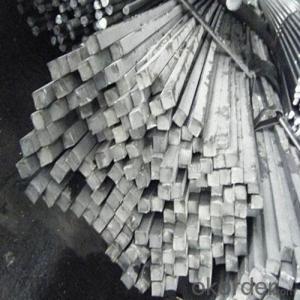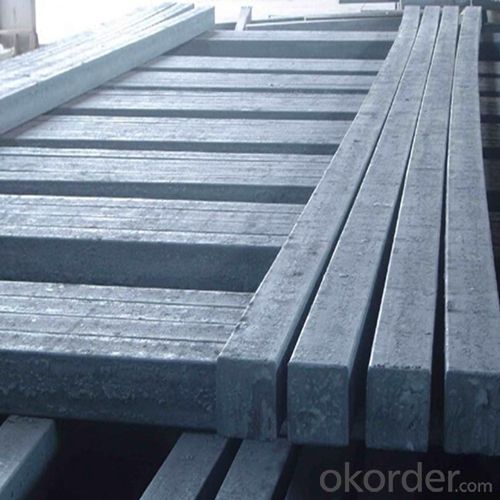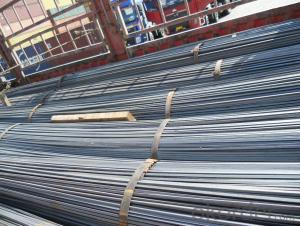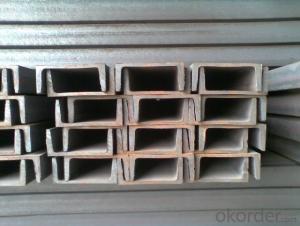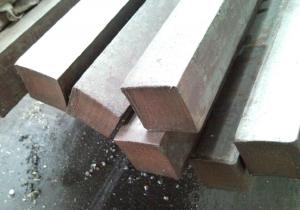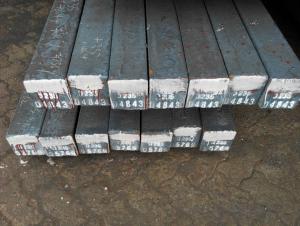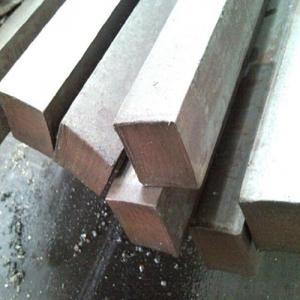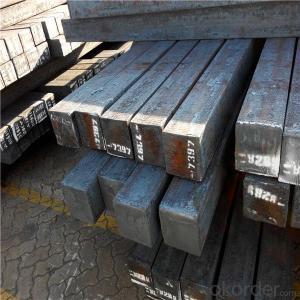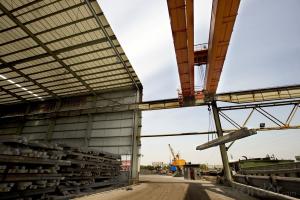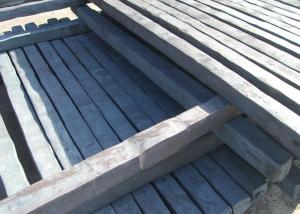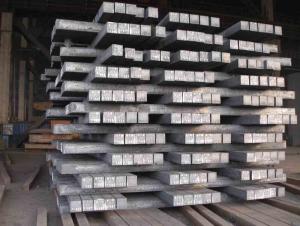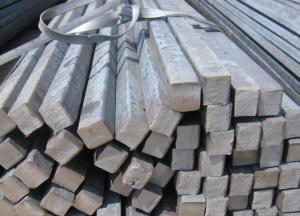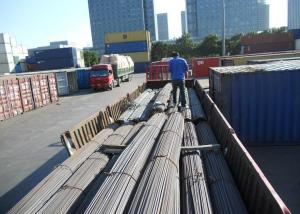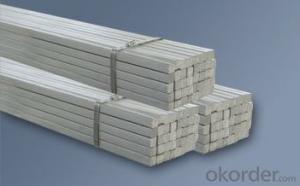Steel Billet in Square Straight Form Big Sizes High Quality
- Loading Port:
- Shanghai
- Payment Terms:
- TT OR LC
- Min Order Qty:
- 50 m.t.
- Supply Capability:
- 10000 m.t./month
OKorder Service Pledge
OKorder Financial Service
You Might Also Like
Specification
Steel Billet in Square Straight Form Big Sizes
Structure:
Steel billet in square straight form big sizes is a bar with square shaped cross-section. It is special case of equal sides. Before steel products are sold on the market, the steel must first be processed into more functional pieces. Raw steel cannot be of use while in its pure form, thus it has to be cast into shape. The freshly made steel, steel billet in square straight form big sizes is still in the form of a metal bar or rectangle. Small sizes of steel billet in square straight form big sizes are used in ship building.
Main Features:
• Grade: Q235
• Type: Mild carbon steel
• A quadrilateral with four equal sides and four right angles.
• Vibration: The stiffness and mass are chosen to prevent unacceptable vibrations, particularly in settings sensitive to vibrations, such as offices and libraries.
• Local yield: Caused by concentrated loads, such as at the beam's point of support.
Specification:
Mechanical Properties | Grade | Steel diameter(mm) | |||
≤16 | 16~40 | 40~60 | 60~100 | ||
Yield Point Δs/MPa | Q195 | ≥195 | ≥185 | - | - |
Q235 | 235 | 225 | 215 | 205 | |
Tensile Strength | Q195 | 315~390 | |||
Q235 | 375~500 | ||||
Elongation δ5% | Q195 | ≥33 | ≥32 | - | - |
Q235 | 26 | 25 | 24 | 23 | |
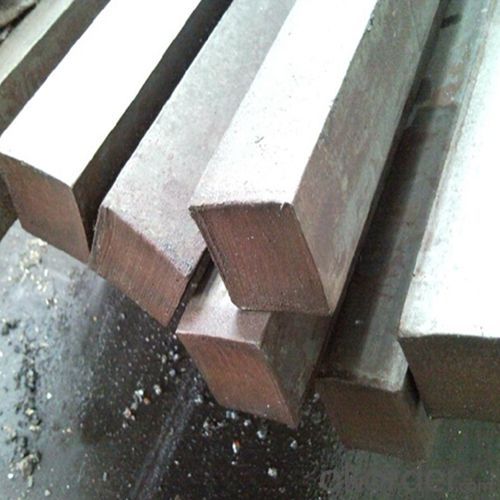
- Q: What are the different markings on a steel square used for?
- A steel square, also known as a framing square or carpenter's square, is a versatile tool commonly used in woodworking, construction, and other trades. It consists of two arms, typically made of steel, that meet at a 90-degree angle. The arms are marked with various measurements and markings, each serving a specific purpose. 1. Degree Scale: One of the most prominent markings on a steel square is the degree scale, which allows users to measure and mark angles other than 90 degrees. This scale is useful for tasks such as cutting rafters, stair stringers, or other angled cuts. 2. Inch Scale: The inch scale is typically marked along one or both arms of the square. It allows for precise measurements in inches, making it handy for measuring and marking lengths or widths of materials. 3. Rafter Tables: Many steel squares have rafter tables printed on one of the arms. These tables provide measurements and angles for common rafter cuts, hip and valley rafter cuts, and other roofing-related calculations. They help carpenters and roofers determine the proper angles and lengths of rafters needed for a particular roof design. 4. Octagon Scale: Some steel squares feature an octagon scale, which is used for marking out octagonal shapes. This scale provides the necessary angles and lengths required to construct an octagon, making it useful for projects like building gazebos or other eight-sided structures. 5. Protractor: Many steel squares have a protractor or angle finder built into one of the arms. This allows users to measure and mark angles accurately, especially when trying to replicate or transfer an existing angle. 6. Center Finding Scale: Some steel squares include a center finding scale that helps users locate the center point of a board or material. This scale is useful for tasks such as drilling holes or marking the midpoint for symmetrical cuts. Overall, the different markings on a steel square serve to enhance its versatility and functionality. They allow users to accurately measure angles, mark dimensions, and perform various calculations, making the tool an essential companion for carpenters, woodworkers, and construction professionals.
- Q: Can a steel square be used for creating perpendicular lines?
- Yes, a steel square can be used for creating perpendicular lines.
- Q: How do you use a steel square to determine angles for chair legs?
- To use a steel square for determining angles for chair legs, you would place the square against the leg and adjust it until the blade aligns with the desired angle. Once aligned, you can then mark the leg using the square as a guide and proceed with cutting or shaping the leg accordingly.
- Q: How do you maintain and clean a steel square?
- Achieving and preserving the cleanliness of a steel square can be accomplished by adhering to the following straightforward instructions: 1. Initiate the process by employing a clean and dry cloth to wipe away any superficial dirt or dust present on the square. 2. In the event that the steel square bears stubborn stains or blemishes, a mild detergent or dish soap combined with water can be utilized. Administer the soapy solution to the affected regions and delicately scrub the square using a brush or sponge with soft bristles. 3. Thoroughly rinse the square with clean water to eliminate any remnants of soap. 4. Subsequent to the cleaning procedure, dry the steel square using a pristine cloth to prevent water spots or the formation of rust. 5. Should any indications of rust manifest on the steel square, it is possible to eliminate it by utilizing a rust remover or a concoction consisting of equal parts lemon juice and baking soda. Employ the solution on the rusty sections, allowing it to sit for a few minutes before gently scrubbing it off. Rinse the square and proceed to thoroughly dry it. 6. To maintain the precision of the steel square and prevent rust, it is recommended to apply a thin layer of oil or lubricant to the surface. This practice will safeguard the steel from moisture and corrosion. Light machine oil or even petroleum jelly can be employed for this purpose. 7. In order to prevent the formation of rust, it is advisable to store the steel square in a clean and dry location, thereby avoiding exposure to moisture or humid conditions. By regularly following these steps, it is possible to guarantee that your steel square remains clean, free from rust, and in optimal working condition for an extended duration.
- Q: What are some common measurements that can be taken with a steel square in sheet metal work?
- Some common measurements that can be taken with a steel square in sheet metal work include measuring angles, checking squareness, marking straight lines, and verifying perpendicularity.
- Q: Can a steel square be used for cutting wood?
- No, a steel square is not typically used for cutting wood. Its primary purpose is for measuring and marking angles and straight lines in woodworking projects.
- Q: How do you use a steel square to measure and mark 326.25-degree angles?
- A steel square cannot directly measure or mark 326.25-degree angles as it typically has markings for 90-degree, 45-degree, and 30-degree angles. To measure or mark a 326.25-degree angle, you would need to use a protractor or a specialized angle measuring tool.
- Q: Can a steel square be used for tile layout?
- Tile layout can definitely benefit from the use of a steel square. This tool, also referred to as a framing square or a carpenter's square, is incredibly versatile and has many applications in layout tasks. One of its main uses is for marking right angles and checking for squareness. When it comes to tile layout specifically, a steel square is great for ensuring that tiles are laid out in straight lines and at perfect right angles. It can also be used to measure and mark the starting point for tile installation, as well as to verify if the tiles are properly aligned and square throughout the installation process. However, it's important to remember that while a steel square is useful, it should be utilized alongside other tile layout tools like a chalk line or a laser level. This combination guarantees accurate and precise tile installation.
- Q: Can a steel square be used for cabinet-making projects?
- Cabinet-making projects can indeed utilize a steel square. This versatile tool, known as a framing square or carpenter's square, is commonly employed in woodworking. Its functionality includes verifying 90-degree angles, measuring straight lines, and ensuring precision in cabinet construction. The steel square is both durable and accurate, serving as a dependable resource for measuring and marking lumber, assessing joint squareness, and confirming cabinet component alignment. Nevertheless, it is worth acknowledging the existence of specialized squares designed explicitly for cabinet-making, such as cabinetmaker's squares or combination squares, which may provide added features or benefits tailored to cabinet-making tasks.
- Q: Are square steel, rectangular tube and angle steel shaped or light steel?
- Belongs to the type steel, also belongs to the light steel. The question you ask is equivalent to whether apples, grapes, or bananas belong to fruit or food
Send your message to us
Steel Billet in Square Straight Form Big Sizes High Quality
- Loading Port:
- Shanghai
- Payment Terms:
- TT OR LC
- Min Order Qty:
- 50 m.t.
- Supply Capability:
- 10000 m.t./month
OKorder Service Pledge
OKorder Financial Service
Similar products
Hot products
Hot Searches
Related keywords
